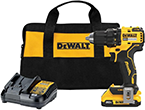Utility sinks seem to get blocked quite a bit more often than the other drains. This could be because of the diverse nature of uses that we subject them to. With all of the materials that get flushed down a utility sinks drain, it isn't surprising that they can and do get clogged so frequently. So you are going to want to know how to handle any and all clogs without having to call in a plumber each time, since that can get really expensive pretty quick.
So before you begin, you are going to need to get some fairly basic items from around your house. These items are going to be a plunger, some towels, and some petroleum jelly. You are going to need a plunger that has a large suction cup. This is so that it can completely cover the entire drain opening in your sink and provide the proper amount of suction needed to remove the blockage in the drain.
Check the water level in the sink. There needs to be enough water to cover the cup of the plunger. It's not just the bottom of the cup, but the entire cup. If there is not enough water to do this, then add some water to whatever is in the sink.
You are going to want to make sure that any and all extra drains are blocked up. Many sinks have an overflow drain that will need to be blocked. In order to block this overflow drain, just use a wet rag and stuff it into the hole. This is going to provide the maximum amount of air or water pressure to be used against the blockage, and have it removed.
After checking the water level and making sure that all other connected secondary drains are blocked, you are ready to begin:

Cordless, Compact, and Powerful! DeWalt's 20-volt drill-driver kit packs a big punch in a small package, with a powerful high-performance motor tucked away inside a compact design. A great addition to the tool chest of any professional or DIYer! Check out DeWalt 20-Volt Drill/Driver Kit today!
Snaking a drain is one of the more sure-fire ways to clear a clog out of any drain. Follow these simple steps, and you ...
Discover MoreUtility sinks are put through a whole lot of abuse, and as such they are subject to frequent clogging. Use these steps to ...
Discover MoreBathroom sinks seem to be susceptible to a large number of clogs or blockages. If you are interested in performing your ...
Discover MoreThere are currently no comments for this tip. (Be the first to leave your comment—just use the simple form above!)
Copyright © 2026 Sharon Parq Associates, Inc.
Comments